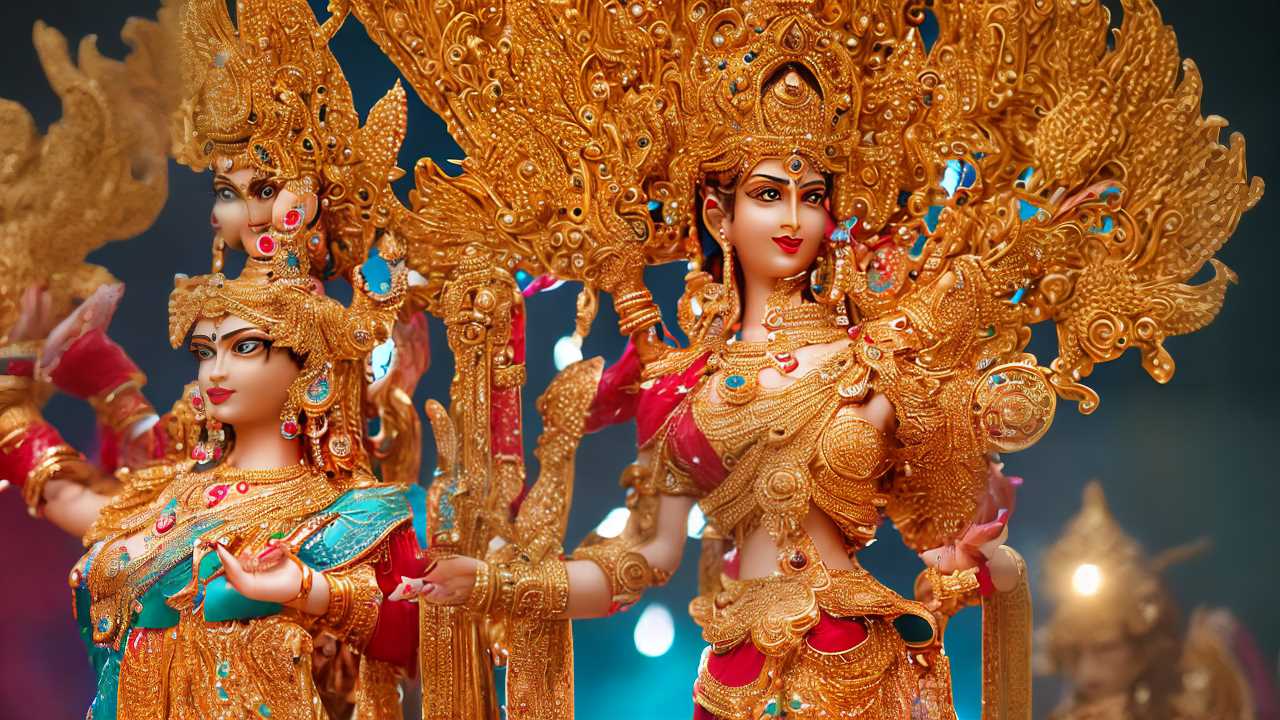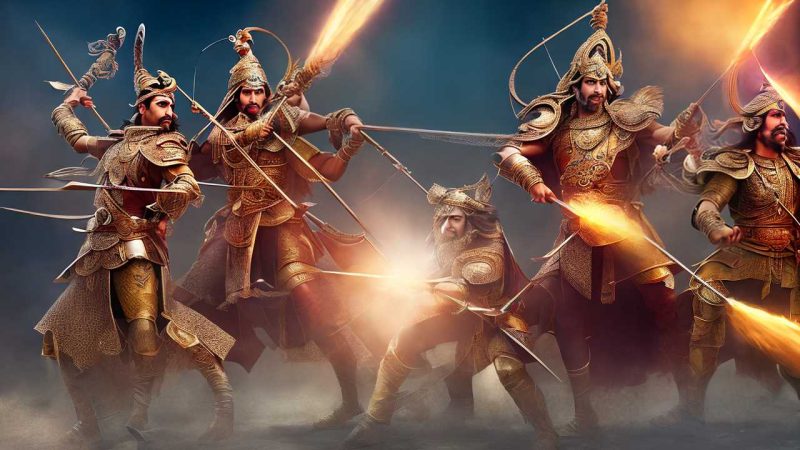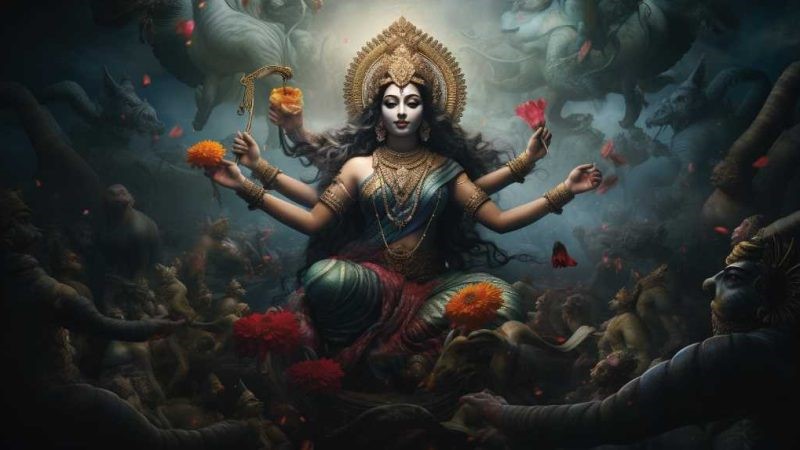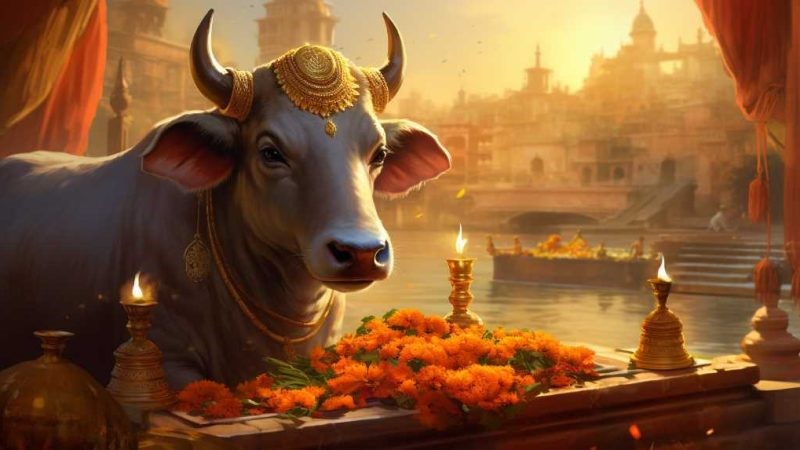Divine Consorts The Many Wives of Hindu Gods

In Hindu stories, the wives of the gods are more than just their partners. They have their own power and are important in the religion of Hinduism.
For example, Parvati is known for her strong love for Shiva, and Lakshmi brings wealth and good luck to those who worship her with Vishnu. People pray to these goddesses for help in many parts of their lives.
Saraswati is known for giving knowledge, Sita is admired for her loyalty and goodness, and Radha shows the deep love she has for Krishna. By looking at these godly couples, we learn more about the gods and how people think of the divine in ways that make sense to them.
These goddesses teach us about the divine, what is right and wrong, and what it means to be human. When we think about these goddesses, we are encouraged to think deeply about these big ideas.
Parvati: Shiva’s Eternal Beloved
Parvati is known as the wife of Shiva in Hindu stories. She is famous for her deep love and strong spiritual power. She always tried hard to get Shiva’s love by doing tough religious practices. Stories about her show how she balances being a caring goddess with Shiva’s more serious nature.
Parvati has many sides; she’s a loving mother but can also be a fierce fighter as Durga and Kali against bad forces. She’s not just a character but represents a vital force called Shakti that is believed to make the whole universe alive. When people study Parvati and Shiva’s relationship, they see it as an example of perfect balance. This idea of balance is really important in Hindu beliefs about the universe.
To explain this better, think of Parvati as both a gentle stream and a powerful waterfall. She can care for her children with softness, but when there’s trouble, she can roar with strength like a warrior. This balance is like a dance between two great powers in the universe that keeps everything in order.
In the stories, Parvati and Shiva together show us that love and power can work in harmony. This is a lesson we can all learn from, showing us how different strengths can come together to create something beautiful.
Lakshmi: Vishnu’s Prosperous Companion
Lakshmi is known as the goddess of wealth and good fortune in Hinduism. She is married to Lord Vishnu, who is responsible for looking after the universe. Lakshmi brings wealth and success, which helps keep everything in balance, just like Vishnu does with his duties.
When people think of Lakshmi, they often picture her with gold coins coming from her hands, which shows that she brings never-ending riches. She is also usually shown sitting or standing on a lotus flower, which stands for being pure and wise.
Lakshmi is more than just Vishnu’s partner; she is crucial because she brings together the physical world and spiritual beliefs. This union is essential for following Dharma, which is the set of moral rules in Hinduism.
To make it clearer, imagine Lakshmi as a team member who makes sure everyone has what they need to do their jobs well. Her role is like making sure that while Vishnu takes care of the big picture, the details—like people having enough to live on—are also looked after.
For example, during the festival of Diwali, many people worship Lakshmi, asking for her blessings of wealth and prosperity. This shows how much she is respected and how central she is to the idea of a balanced and ethical life.
Saraswati: The Font of Wisdom
In Hindu culture, Saraswati is an important goddess who represents wisdom and learning. She is often shown sitting on a white lotus, which is a symbol of purity. Saraswati has four arms, which tell us that learning has many parts. She holds different items in her hands: a book, a string of beads, and usually a veena, a type of musical instrument. These items mean different things: the book is for knowledge, the beads are for spiritual growth, and the veena is for the arts and the natural patterns of the world.
Saraswati is also the partner of Brahma, who is the god that creates everything. This shows that Saraswati’s wisdom is not just about knowing things; it’s also about being creative and understanding the world deeply. People who follow Hinduism think that learning and growing spiritually are very important for a good and meaningful life.
When talking about Saraswati, it’s not enough to say she’s respected; it’s essential to understand that she inspires people to keep learning and to see knowledge as a key part of their lives. This shows us how much value the Hindu tradition places on being wise and spiritually aware.
Sita: Avatar of Virtue and Fidelity
Sita is a highly respected character in Hindu stories, similar to how Saraswati is known for her wisdom. Sita is seen as the perfect example of a good wife because of her actions in the Ramayana story. She is married to Lord Rama, who is a form of the god Vishnu. Sita’s life is full of challenges, but she remains loyal and pure. This shows the importance of living a good and moral life, which is a key idea in Hindu beliefs.
Experts who study her story say it shows what society and religion expect from people, especially women. Sita is praised not just for being loyal to her husband but also for sticking to what is morally right.
Now, when we think about Sita, it’s like looking at a model of deep commitment. Her story isn’t just about a wife’s loyalty to her husband; it’s also about being faithful to what’s right and good in the world. This is why she is such an important figure in Hindu culture.
Radha: Krishna’s Celestial Love
In Hindu stories, Radha is known for her deep love for Lord Krishna, who is believed to be the eighth form of the god Vishnu. Her love is special because it goes beyond just physical attraction—it’s about a deep connection with the divine. Unlike other gods and goddesses who are often shown as married couples, Radha and Krishna share a unique bond that’s all about spiritual love, showing us that real devotion doesn’t have to follow society’s rules.
Experts on these stories see Radha as a symbol of our souls, which always want to be one with the universe, and Krishna represents that universal spirit. So, Radha’s not just Krishna’s partner; she helps bring out the best in him, inspiring everyone to love unconditionally.
Let’s think about it like this: Imagine your soul is like a phone looking for the strongest Wi-Fi signal. Now, Krishna is like the best possible Wi-Fi network out there. Radha’s love is like the phone’s constant attempt to connect to that perfect Wi-Fi. It’s not about just being next to the router; it’s about that full, uninterrupted connection that makes everything work better.
In their story, Radha helps Krishna in his divine mission, which is kind of like a cosmic performance, and she shows what it means to truly love and be devoted. This is a reminder to us all about the power of love that doesn’t ask for anything in return.
Conclusion
In summary, the wives of Hindu gods are important because they show different important qualities. Parvati shows us the importance of loyal love; Lakshmi is all about wealth and good fortune; Saraswati teaches us about the value of knowledge and learning; Sita is an example of honesty and staying true to your partner; and Radha is the ultimate symbol of romantic love. Their stories are a big part of Hindu stories and help us understand how people in this culture see the power and spiritual side of women in a religion with many gods.
Each one of these goddesses has her own story that helps us see why these qualities matter. For example, Parvati’s unwavering support for her husband, Shiva, shows how important it is to be there for the ones we love. Lakshmi’s presence is always welcomed during Diwali, the festival of lights, when people pray for prosperity. Saraswati is often shown with books or a musical instrument, reminding us that learning and the arts are precious. Sita’s journey in the epic Ramayana shows her strong character and commitment, teaching us about the importance of being faithful. Radha’s love story with Krishna is celebrated in songs and dances across India, showing that love is a powerful and divine force.
Their tales are not just old stories but continue to influence how people think and act today. They encourage women to be strong and spiritual, and everyone to value the different roles that women play in life.






